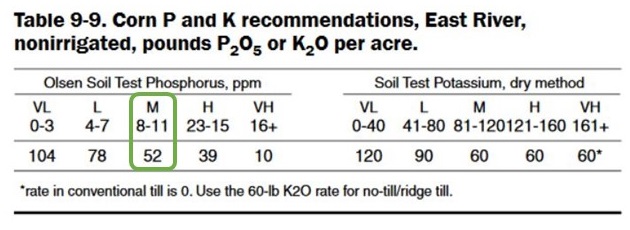Are You Giving Credit Where Credit is Due? Thoughts on nutrient management planning.
In between trying to get corn off the field and hoping the snow waits just a little longer, you are also supposed to be thinking about a field plan for next year. What will you plant, what herbicides you will need and what fertilizers will you use? Did you spread manure on your fields? If you did, does that manure have a fertilizer value and are you considering that when you make your fertility plans?
The total nitrogen (N) in solid beef manure is 50% available to plants during the first growing season. That means if the manure you used has 13 pounds of total N/ton of manure (ND beef manure average), 6.5 pounds of that is available for plant growth. Given you spread 25 tons of manure/acre you have 325 pounds of total N with 162.5 pounds of that available during the first growing season. What happens to the other 162.5 pounds? In year 2, 20 percent of the total N, or in this example, 65 pounds of N would be available during the second growing season. Are you taking that credit into consideration as you map out your nutrient management plan for the next growing season?
Let’s say you plan to plant corn grain in eastern North Dakota in medium-textured soils with historic yields greater than 160 bu/ac. You have a previous crop (soybean) credit and you have 20 pounds N/ac in your soil. (You know all of this because you tested your soils and you used the ND Corn Nitrogen Calculator.) The N recommendation for your yield goals would be 162 pounds/ac.
According to this example, in year 1, you wouldn’t need to add any other nitrogen fertilizer to reach your yield goals. Looking at phosphorus (P), if you have 6 pounds of P/ton of manure (ND beef manure average) and you’re spreading at 20 ton/ac you have 120 pounds of total P. Eighty percent of the total P in solid beef manure is available for plant growth during the first growing season, so 96 pounds of P/ac would be available. If your soils are in the medium range (8-11 ppm) according to the Olsen test, you would need 52 pounds of P/ac. So your N and P requirements are already met.

From SF-882 - North Dakota Fertilizer Recommendation Tables and Equations
Let’s move on to year 2. You’re going to plant soybean in the field described above following the corn crop. You have no previous crop credit. Your soil test says you have 15 pounds of N and you know from above that you have 65 pounds of N from manure. So you have 80 pounds of N fertilizer right off the top. According to the North Dakota Fertilizer Recommendation Tables and Equations, you will need zero pounds of N fertilizer for a 60 bu/ac yield potential. Ten percent of the total P in manure is available in year two for plant use. The P credit from the manure would be 12 pounds/ac. Because of the excess P that was applied during year 1, your soil test P will very likely be in the high to very high range, neither of which require additional P fertilizer.
Often times in the Midwest, producers aren’t instructed to give manure fertilizer credit value but we have to remember that along with the added organic matter and beneficial organisms, we are also adding useful nutrients when manure is spread on a field. Let’s give credit where credit is due.
Additional resources:
- Find a North Dakota custom manure hauler: https://www.ag.ndsu.edu/lem
- Regional Manure and Soil Health Blog: http://soilhealthnexus.org/blog/
- e-Xtension Animal Manure Management: http://articles.extension.org/pages/8647/manure-nutrient-management
Mary Berg
Mary.Berg@ndsu.edu
Area Extension Specialist
Livestock Environmental Management


